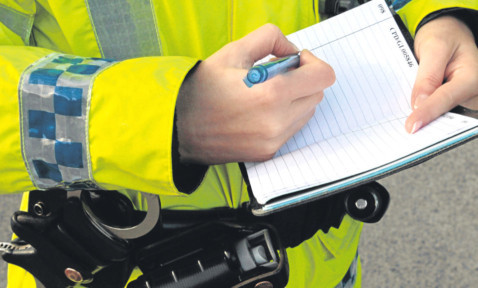
Reports that newly set up single force, Police Scotland, has stopped and searched more than 23,000 of our kids since April was quite an eye opener.
To discover in the same period across Scotland more than 186,000 people had been subject to those new powers of stop and search had me wondering if we had accidently mixed our figures up with those from some despotic
dictatorship in the Far East.
But no, the numbers were bang on, though maybe not bang to rights our human rights!
It’s a staggering jump. Between April and June this year Edinburgh and the Lothians’ stop and search figures almost doubled from the same period last year, from 4,706 to 8,259.
Strathclyde carried out more than 612,000 searches, which, despite it having a quarter of the population, is more than London’s, and up from 391,000 the previous year!
In fact England, with a population of more than 10 times that of ours, has nowhere near the number of stop and searches carried out on its
citizens.
So what is going on? Is this dramatic rise in stop and search justified? Is Scotland so crime ridden and dangerous we need such a power wielded so often, so robustly?
Is it indeed target driven, as Scotland’s human rights commissioner Prof Alan Miller warns?
Well Police Scotland point to the record reduction in violent crime as justification for the escalation 50% in Strathclyde alone and a reduction in teenagers carrying knifes by 75%.
And its chief constable, Stephen House, architect of the policy first introduced six years ago in Glasgow, strongly defends its use under the one force, as long as it is carried out with integrity, fairness and respect.
His force also strongly refutes any allegation that the increased use of the powers is in any way target driven.
Well, I have no reason to disbelieve him or the new force and welcome any drop in violent crime, especially teenage knife crime.
But the issue of targets still remains a touchy subject and the jury is still way out on the notion that the use of stop and search alone has achieved this welcome drop.
Indeed, if only 13% of the searches uncover something suspicious, as the figures from Strathclyde suggest, then it’s no wonder many civil libert-arians are worried.
They see the searches not only as intrusive and disproportionate but an attack on our civil liberties which could alienate a large swathe of our population. Young males in particular.
With more CCTV surveillance, laws and personal checks carried out on its citizens than any other similar sized democratic country in Western Europe we would do well to remember the words of 19th Century philosopher John Stuart Mill.
He said: “The only freedom which deserves the name is that of pursuing our own good, in our own way so long as you do not attempt to deprive others of theirs, or impede their efforts to obtain . . .”
I couldn’t agree more.

Enjoy the convenience of having The Sunday Post delivered as a digital ePaper straight to your smartphone, tablet or computer.
Subscribe for only £5.49 a month and enjoy all the benefits of the printed paper as a digital replica.
Subscribe